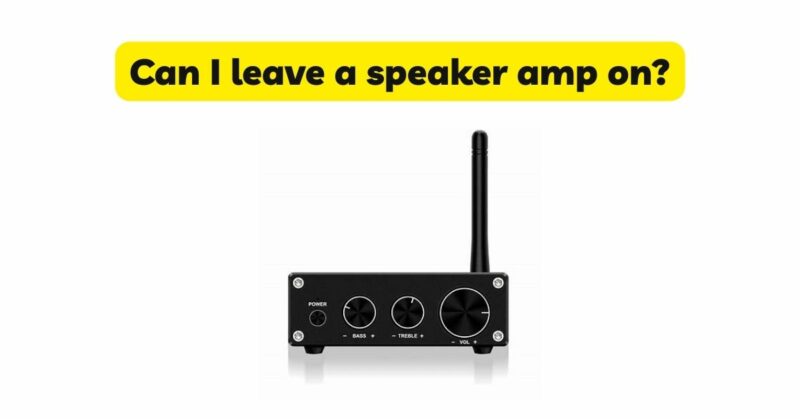Speaker amplifiers play a vital role in delivering high-quality audio and powering speakers for various applications. When it comes to the question of whether it is safe or advisable to leave a speaker amplifier on continuously, there are several factors to consider. This article aims to provide a detailed analysis of the advantages and disadvantages of leaving a speaker amplifier on, helping you make an informed decision.
I. The Functionality of Speaker Amplifiers:
To better understand the implications of leaving a speaker amplifier on, it is important to comprehend how these devices work. Speaker amplifiers receive low-power audio signals from sources such as music players or audio receivers and amplify them to a level that can effectively drive speakers. They contain electronic components, such as transistors and capacitors, that convert electrical signals into amplified sound.
II. Advantages of Leaving a Speaker Amplifier On:
- Instant Availability: By leaving the speaker amplifier on, you eliminate the need to wait for it to power up before playing audio. This can be particularly advantageous in scenarios where immediate access to sound is required, such as in professional settings or during social events.
- Reduced Stress on Components: Frequent power cycling can put stress on the internal components of a speaker amplifier. When you leave the amplifier on, you avoid the power surges associated with turning it on and off. This can potentially extend the lifespan of the components and minimize the risk of premature failure.
- Consistent Sound Quality: Some argue that leaving the amplifier on can enhance sound quality over time. They suggest that the amplifier’s electronic components reach an optimal operating temperature after an extended period of being powered on, resulting in more accurate audio reproduction. This theory implies that leaving the amplifier on can lead to a more consistent and pleasing sound experience.
III. Disadvantages of Leaving a Speaker Amplifier On:
- Energy Consumption: One of the primary concerns associated with leaving a speaker amplifier on continuously is the energy consumption. Even when not in use, the amplifier continues to draw power, contributing to unnecessary energy waste. From an environmental and cost perspective, this can be undesirable.
- Component Wear and Tear: Continuous operation places constant stress on the components of a speaker amplifier. Over time, this can lead to accelerated wear and tear, potentially reducing the overall lifespan of the device. Regular power cycling, on the other hand, allows for periods of rest and can help mitigate this issue.
- Safety Considerations: Speaker amplifiers generate heat during operation, and leaving them on for extended periods without proper ventilation can lead to overheating. This poses a potential safety hazard, as excessive heat can damage the amplifier or even cause fires. Therefore, careful monitoring of the amplifier’s temperature is necessary if it is left on continuously.
IV. Finding a Balance:
Considering the advantages and disadvantages mentioned above, it is possible to strike a balance between convenience, energy efficiency, and component longevity:
- Usage Patterns: Assess your typical usage patterns and determine when the speaker amplifier is most frequently used. If there are long periods of inactivity, it may be more energy-efficient to turn the amplifier off during those times.
- Power Management Features: Many modern speaker amplifiers are equipped with power-saving features, such as standby or sleep modes. Utilizing these features allows you to automatically power down the amplifier after a period of inactivity, reducing energy consumption while maintaining convenience.
- Environmental Factors: Consider the ambient temperature and ventilation conditions of the room where the amplifier is located. Adequate airflow and cooling can help mitigate potential overheating risks if the amplifier is left on for extended periods.
- Maintenance: Regularly inspect the speaker amplifier for any signs of wear or malfunction, regardless of whether it is left on or turned off. Clean the amplifier to prevent dust buildup, which can affect performance and increase the risk of overheating.
Conclusion:
The decision to leave a speaker amplifier on continuously involves weighing the convenience of instant availability and potential sound quality improvements against the energy consumption, component wear and tear, and safety risks associated with continuous operation. By considering usage patterns, utilizing power management features, and ensuring proper maintenance, you can find a balance between convenience, energy efficiency, and the longevity of your speaker amplifier.


